常用注解:

自定义注解,标准格式:
1,target:注解作用域
2,Retention:声明周期
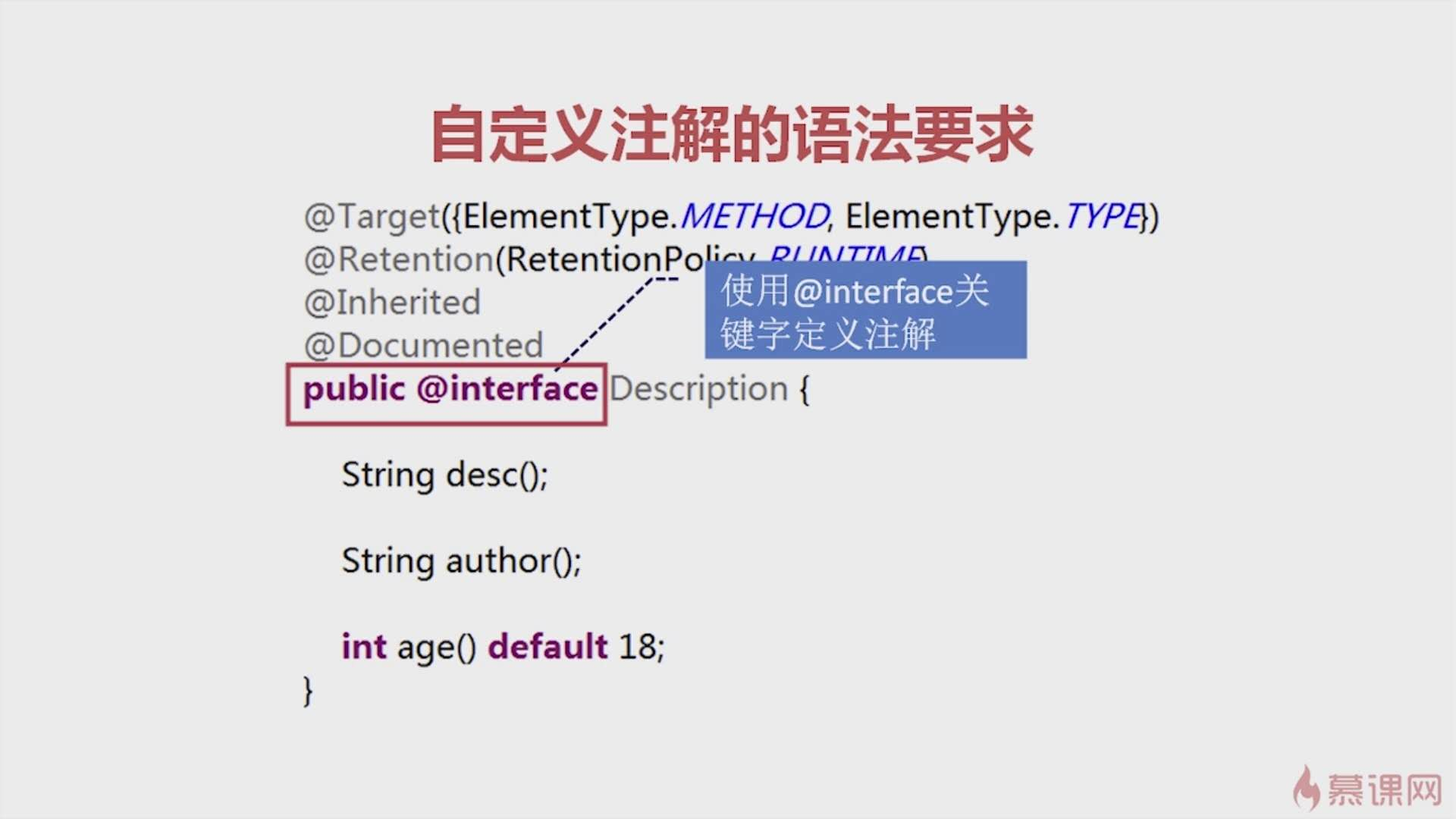

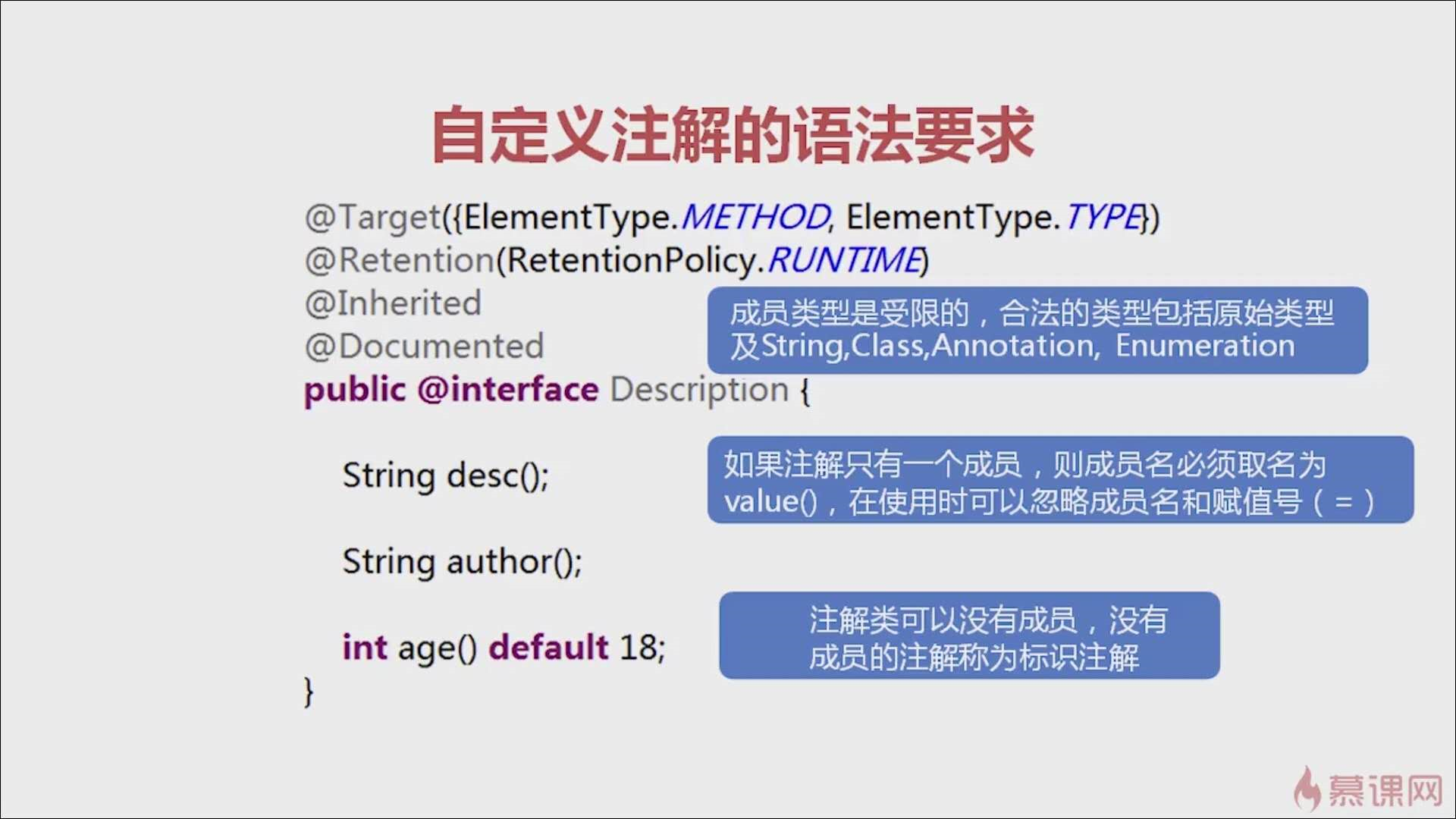
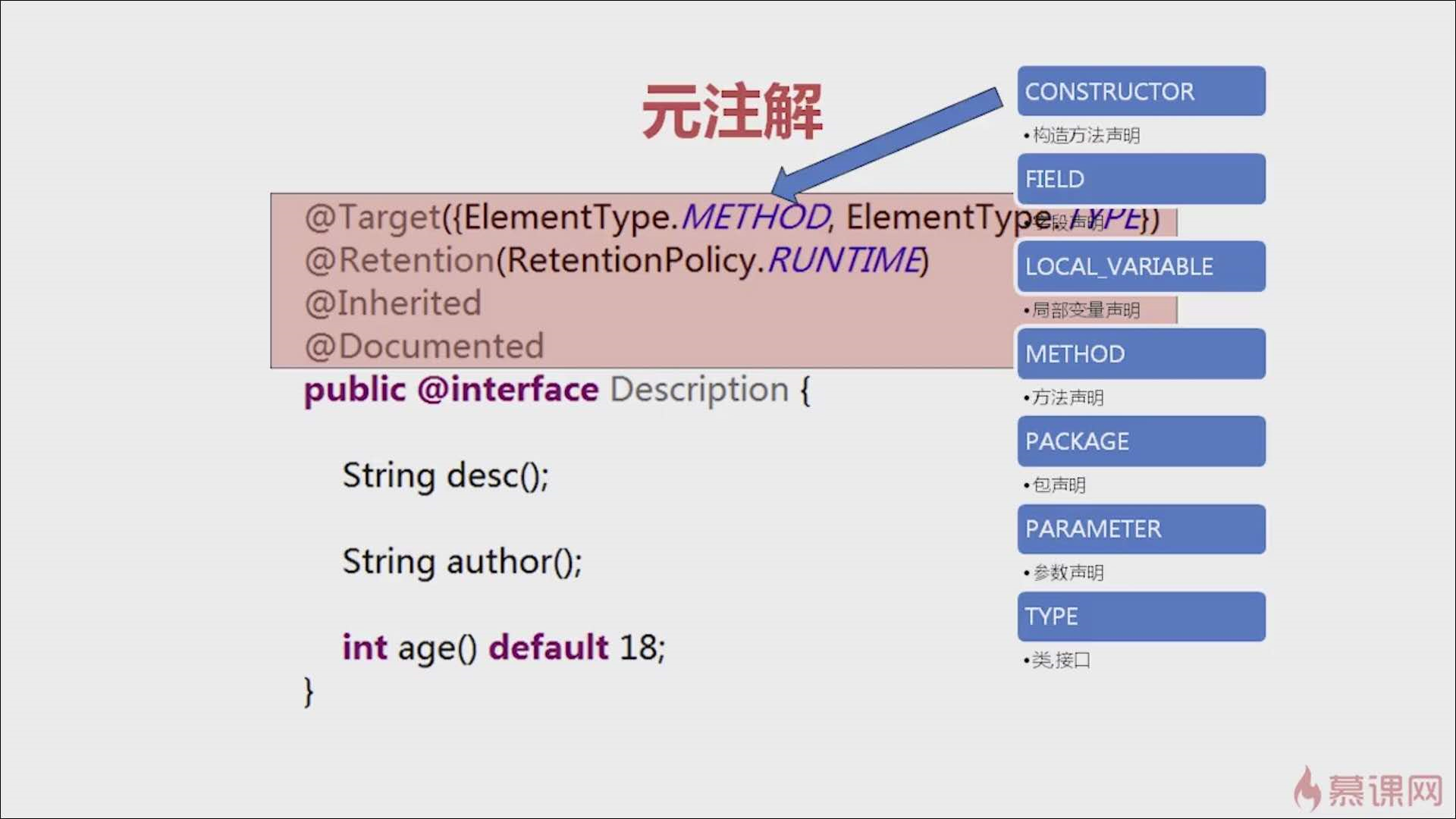

运行子类继承,但是子类继承只能作用到类注解,字段注解,是继承不了的。
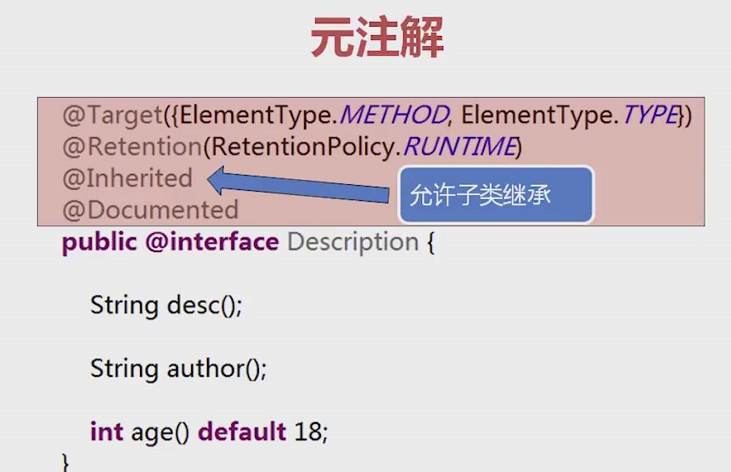
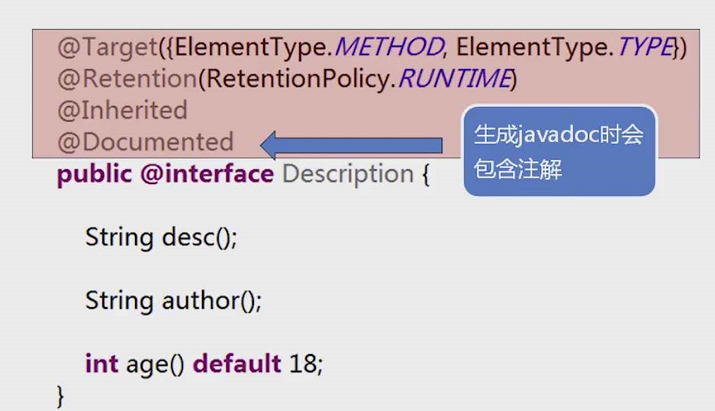
使用注解:通过下面这种方式,为注解的成员赋值,使用的时候会通过成员名,找到这些值,去使用这些值。

如果注解只有一共成员,该成员必须命名为value,这样使用注解的时候方便:如:@注解(“值1”),相当于@注解(value=“值1”);
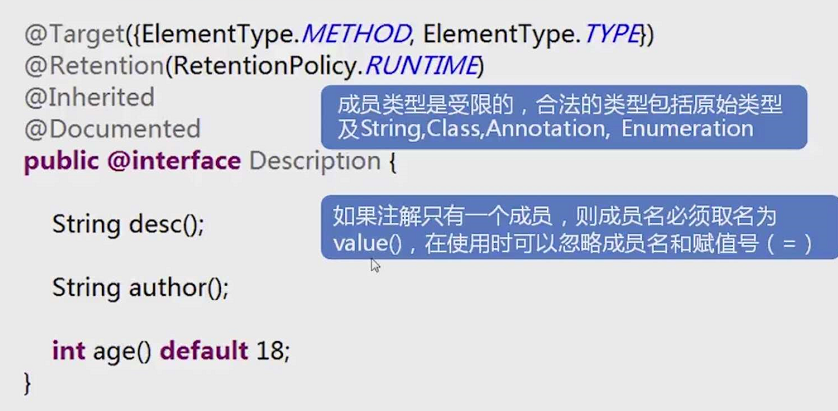
解析注解:
解析注解主要用到反射的方式,在下面的例子中可以看到。
主要代码如下:
//1,获取到class Class c=f.getClass(); //2,获取到table的名字 boolean exists=c.isAnnotationPresent(Table.class);//判断该类Filete是否是包含注解Table if(!exists) { return null; } Table t=(Table) c.getAnnotation(Table.class);//取出Filete这个类的Table注解 String tableName=t.value();//获取该注解的值
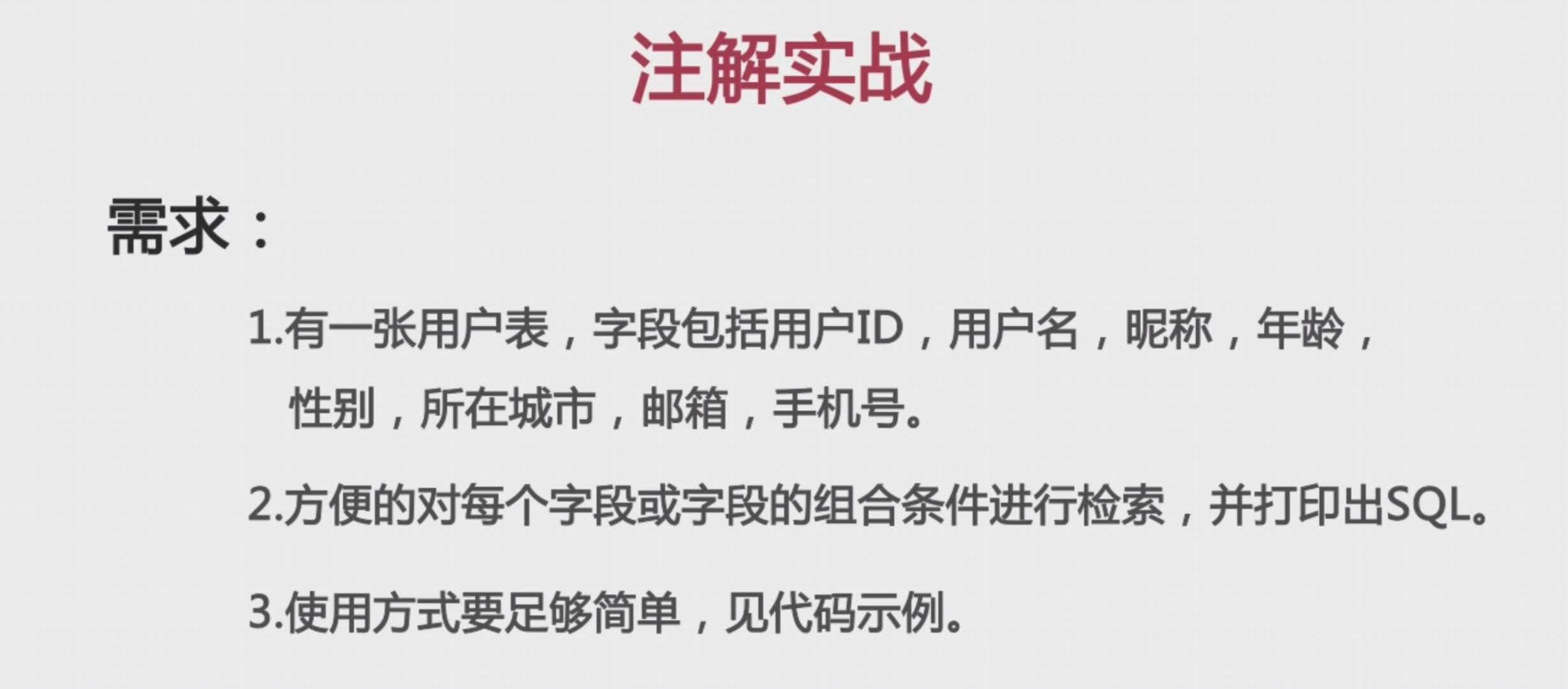
使用注解模仿hibernate获取sql的方法。
1,定义两个注解,Table和column
package com.Annotation; import java.lang.annotation.ElementType; import java.lang.annotation.Retention; import java.lang.annotation.RetentionPolicy; import java.lang.annotation.Target; @Target({ElementType.TYPE}) //作用域为在类上 @Retention(RetentionPolicy.RUNTIME) //生命周期为运行时 public @interface Table { String value(); }
和
package com.Annotation; import java.lang.annotation.ElementType; import java.lang.annotation.Retention; import java.lang.annotation.RetentionPolicy; import java.lang.annotation.Target; @Target({ElementType.FIELD}) //作用域为在字段上 @Retention(RetentionPolicy.RUNTIME) //生命周期为运行时 public @interface Column { String value(); }
2,定义一个数据库模型类:并分别在类名和字段名上加上注解,分别跟表名和字段名关联
package com.Annotation; @Table("user") public class Filter { @Column("id") private int id; @Column("user_Name") private String userName; @Column("age") private int age; @Column("city") private String city; @Column("email") private String email; public int getId() { return id; } public void setId(int id) { this.id = id; } public String getUserName() { return userName; } public void setUserName(String userName) { this.userName = userName; } public int getAge() { return age; } public void setAge(int age) { this.age = age; } public String getCity() { return city; } public void setCity(String city) { this.city = city; } public String getEmail() { return email; } public void setemail(String email) { this.email = email; } }
3,通过set字段值,来定义查询条件,定义一共querey方法,同注解,反射获取sql。
package com.Annotation; import java.lang.reflect.Field; import java.lang.reflect.InvocationTargetException; import java.lang.reflect.Method; public class Test { public static void main(String[] args) { Filter f1=new Filter(); f1.setAge(10);//查询id为10的用户 Filter f2=new Filter(); f2.setCity("大连");//查询城市为大连的用户 Filter f3=new Filter(); f3.setCity("liu@sina.com,zh@sina.com,8888@163.com"); //查询邮箱为上面的用户 String sql1=query(f1); String sql2=query(f2); String sql3=query(f3); System.out.println(sql1); System.out.println(sql2); System.out.println(sql3); } private static String query(Filter f) { StringBuffer sb=new StringBuffer(); //1,获取到class Class c=f.getClass(); //2,获取到table的名字 boolean exists=c.isAnnotationPresent(Table.class);//判断该类Filete是否是包含注解Table if(!exists) { return null; } Table t=(Table) c.getAnnotation(Table.class);//取出Filete这个类的Table注解 String tableName=t.value();//获取该注解的值 sb.append(" select * from ").append(tableName).append("where 1=1"); //3,遍历所有字段 Field[] fArray=c.getDeclaredFields(); for(Field field:fArray) { //4,处理每个字段对应的sql //4,1,拿到字段名 boolean fExis=field.isAnnotationPresent(Column.class); if(!exists) { continue; } Column column=field.getAnnotation(Column.class);//获取该字段上的column注解 String columnName=column.value(); //4,2,拿到字段的值 String filedName=field.getName(); String getMethoudName="get"+filedName.substring(0,1).toUpperCase()+ filedName.substring(1); Object fieldValue = null;//为了让各种类型的返回值都能接收,定义Object类型 try { Method getMethod=c.getMethod(getMethoudName); fieldValue=getMethod.invoke(f);//调用f的对应字段的get方法 } catch (Exception e) { e.printStackTrace(); } //4,3,拼装sql if(fieldValue==null|| (fieldValue instanceof Integer && (Integer)fieldValue==0)) { continue; } sb.append(" and ").append(filedName); if(fieldValue instanceof String) //如果字符串是Int类型,加上单引号 { if(((String) fieldValue).contains(",")) //包含,,表示是子查询 { String []values=((String) fieldValue).split(","); sb.append("in("); for(String v:values) { sb.append("'").append(v).append("'").append(","); } sb.deleteCharAt(sb.length()-1);//去掉最后一个逗号 sb.append(")"); } else //否则是普通查询 { sb.append("=").append("'").append(fieldValue).append("'"); } } else if(fieldValue instanceof Integer) { sb.append("=").append(fieldValue); } } return sb.toString(); } }
运行结果:
